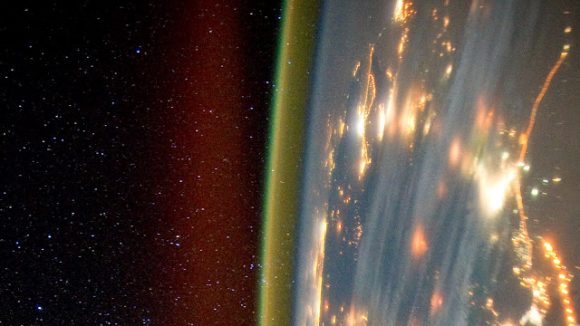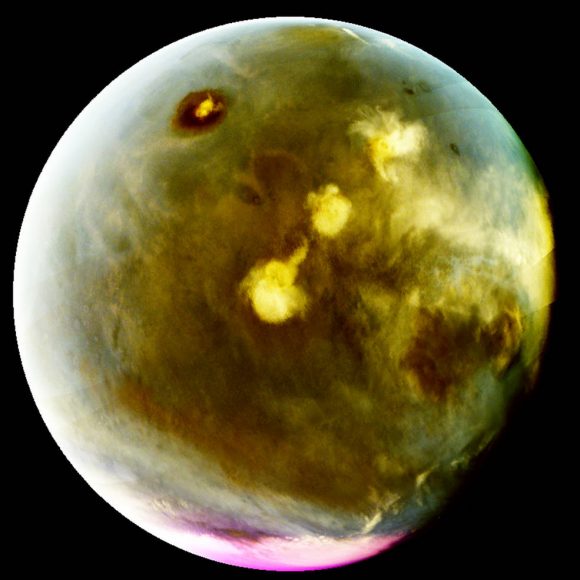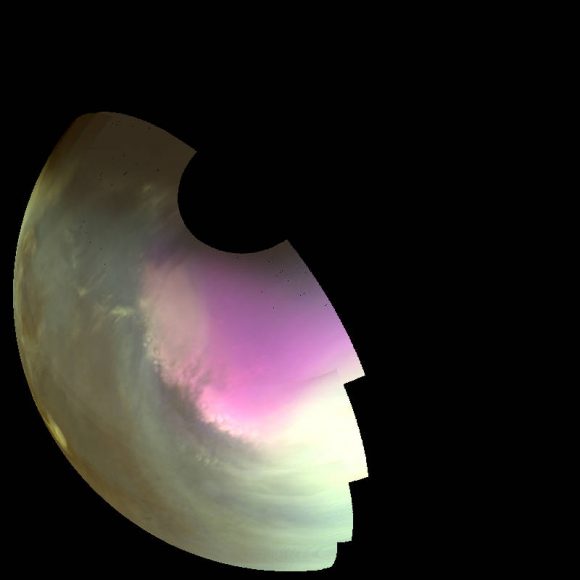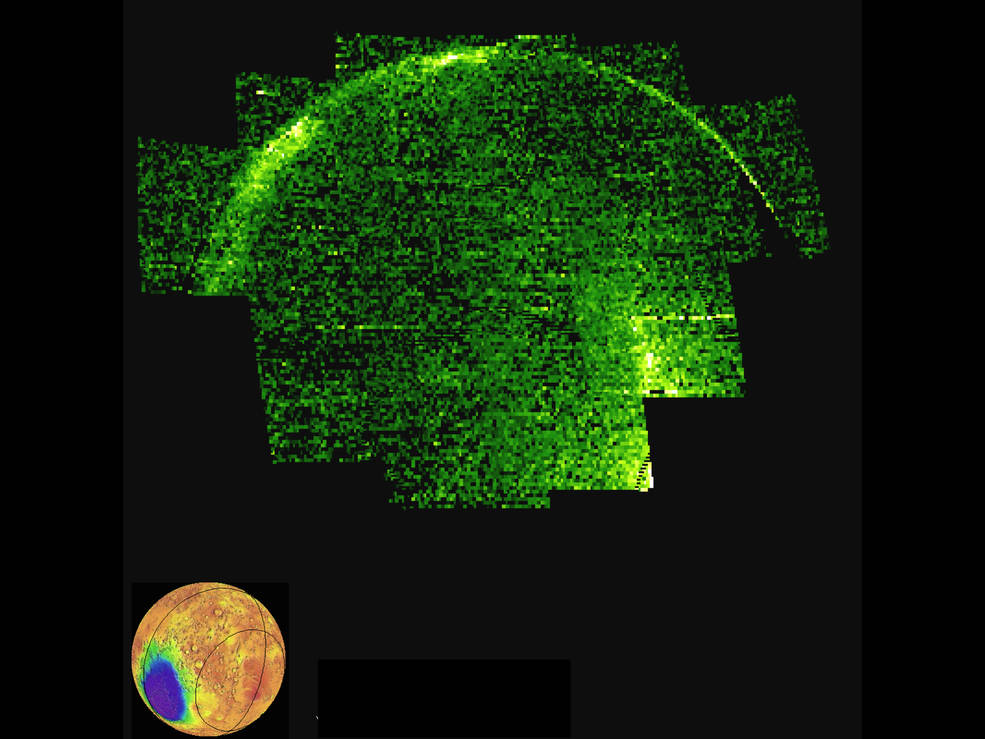Mars’ atmosphere is about 100 times thinner than Earth’s, but there’s still a lot going on in that wispy, carbon dioxide Martian air. The MAVEN spacecraft recently took some exceptional images of Mars using its Imaging UltraViolet Spectrograph (IUVS), revealing dynamic and previously invisible subtleties.
MAVEN took the first-ever images of nightglow on Mars. You may have seen nightglow in images of Earth taken by astronauts on the International Space Station as a dim greenish light surrounding the planet. Nightglow is produced when oxygen and nitrogen atoms collide to form nitric oxide. This is ionized by ultraviolet light from the Sun during the day, and as it travels around to the nightside of the planet, it will glow in ultraviolet.

“The planet will glow as a result of this chemical reaction,” said Nick Schneider, from the Laboratory for Atmospheric and Space Physics at the University of Colorado, Boulder, speaking today at the American Astronomical Society Division for Planetary Sciences meeting. “This is a common planetary reaction that tells us about the transport of these ingredients and around the planet and show how winds circulate at high altitudes.”
MAVEN’s images show evidence of strong irregularities in Mars’ high altitude winds and circulation patterns and Schneider said these first images will lead to an improved understanding of the circulation patterns that control the behavior of the atmosphere from approximately 37 to 62 miles (about 60 to 100 kilometers) high.

MAVEN’s ultraviolet images also provide insight into cloud formation and ozone in Mars atmosphere.
The images show how water ice clouds form, especially in the afternoon, over the four giant volcanoes on Mars in the Tharsis region. Cloud formation in the afternoon is a common occurrence on Earth, as convection causes water vapor to rise.
“Water ice clouds are very common on Mars and they can tell us about water inventory on the planet,” Schneider said. “In these images you can see an incredible expansion of the clouds over the course of seven hours, forming a cloud bank that must be a thousand miles across.”
He added that this is just the kind of info scientists want to be plugging in to their circulation models to study circulation and the chemistry of Mars’ atmosphere. “This is helping us advance our understanding in these areas, and we’ll be able to study it with MAVEN through full range of Mars’ seasons.”

Credits: NASA/MAVEN/University of Colorado
Schneider explained that MAVEN’s unique orbit allows it to get views of the planet that other orbiters don’t have. One part of its elliptical orbit takes it high above the planet that allows for global views, but it still orbits fast enough to get multiple views as Mars rotates over the course of a day.
“We get to see daily events evolve over time because we return to that orbit every few hours,” he said.

Credits: NASA/MAVEN/University of Colorado
In addition, dayside ultraviolet imagery from the spacecraft shows how ozone amounts change over the seasons. Ozone is destroyed when water vapor is present, so ozone accumulates in the winter polar region where the water vapor has frozen out of the atmosphere. The images show ozone lasting into spring, indicating that global winds are constraining the spread of water vapor from the rest of the planet into winter polar regions.
Wave patterns in the ozone images show wind pattern, as well, helping scientists to study the chemistry and global circulation of Mars’ atmosphere.
Additional reading:
NASA


Does anybody know how much nitric oxide is contributed to the atmosphere by sunlight as compared to the contribution by diesel engines?